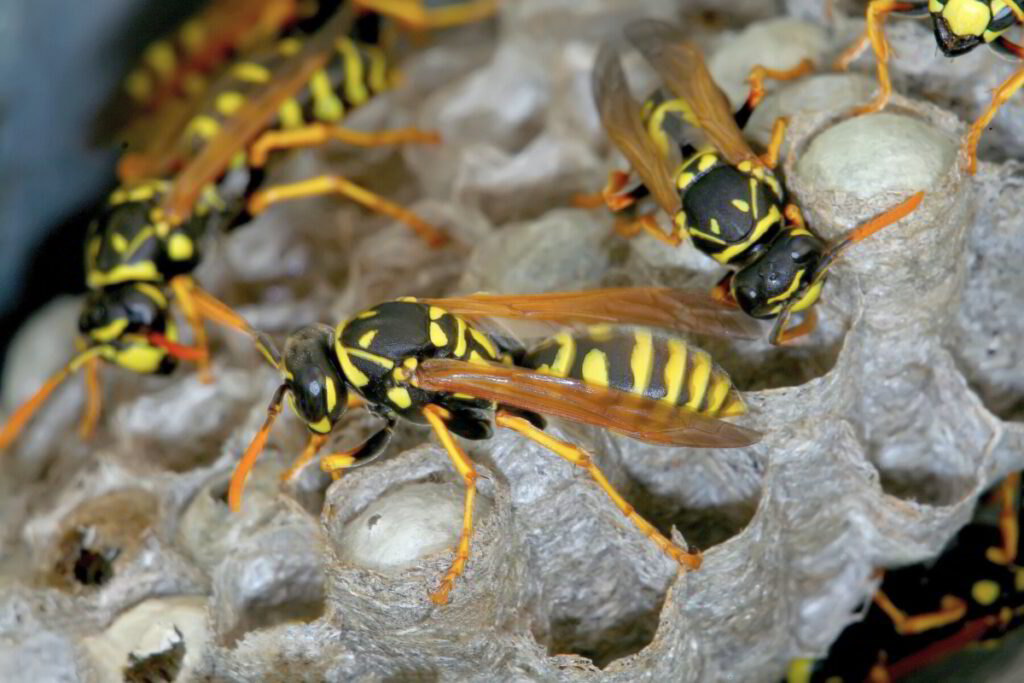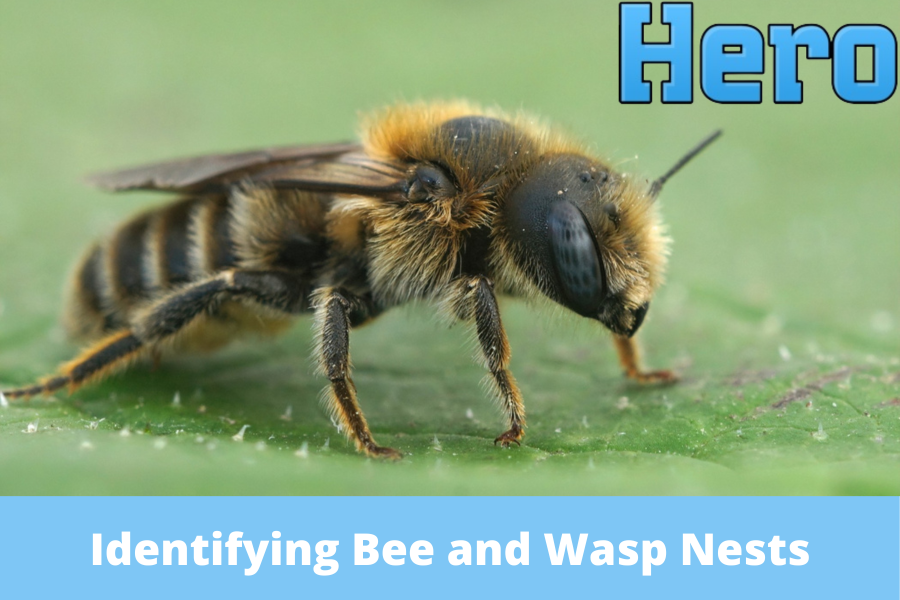Pollinating flowers and keeping pest populations in check are just two essential jobs bees and wasps provide for our ecosystems. However, when their nests are built near human dwellings, they can pose a risk to people, especially those allergic to their stings. Incorporating bees and wasps control strategies into this process is crucial, not only for safeguarding human health and property but also for supporting the beneficial activities of these insects.

Identifying Bee Nests
Bees typically build their nests in protected locations, such as tree hollows, attics, wall voids, or underground caves. The appearance of a bee nest can vary depending on the species. Still, they generally consist of hexagonal cells made from beeswax or paper-like material.
Look for an accumulation of bees entering and exiting a small hole or aperture, especially during the daytime when they are most active. Honeybees, for example, often construct giant, complex hives with multiple layers. At the same time, bumblebees may nest in abandoned rodent burrows or grassy areas.
Identifying Wasp Nests
Wasps are known for their distinctive paper nests, which can be found hanging from trees, eaves, shrubs, or underground caves. These nests are typically grayish and have a papery texture, constructed from chewed wood fibers and saliva.
Depending on the species, wasp nests can vary in size and shape. Some, like the common paper wasp, build open, umbrella-shaped nests, while others, such as yellow jackets, create enclosed nests with small entrance holes.
What to Do if You Find a Bee and Wasp Nest
Remain Calm
If you find a bee or wasp nest on your property, be calm and avoid disturbing the insects. Agitating them can provoke defensive behavior and increase the risk of stings.
Assess the Situation
Determine the size and location of the nest. Is it in an area where people frequently pass by? Is it near a doorway or window? You can determine the best next step by evaluating these variables.
Contact a Professional
For large or difficult-to-reach nests, consult a licensed pest control expert or a beekeeper who has experience removing nests. Do not risk injury or stings by trying to remove the nest alone.
Take Precautions
If the nest is small and manageable, you may deal with it yourself. However, wearing protective clothing, such as thick gloves, long sleeves, and a veil or hat, is crucial to minimize the risk of stings.
Use Caution
Approach the nest slowly and carefully, avoiding sudden movements that may agitate the insects. If using insecticide, follow the instructions on the label and apply it during the evening when most of the colony is inside the nest.
Monitor the Area
After removing or treating the nest, monitor the area for any signs of activity. Occasionally, secondary nests or stragglers may appear, requiring further action.
Conclusion
Identifying bee and wasp nests and knowing how to handle them safely is essential for minimizing conflicts between humans and these crucial pollinators. By understanding where to look for nests and how to respond appropriately if we find one, we can coexist with bees and wasps while ensuring the safety of ourselves and our families. Always seek professional assistance from Hero Pest Control to deal with nest removal or treatment if in doubt. Using our knowledge and experience, we can control wasp and bee populations in a way that doesn’t harm humans or the environment.

